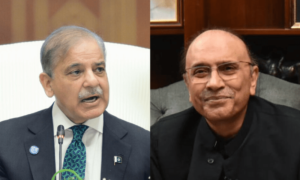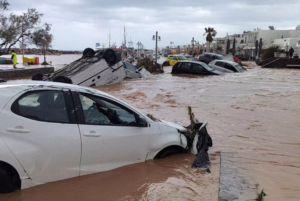LAHORE:
Pakistan’s small and medium-sized businesses are trying to catch up with the global e-commerce boom, but their journey is not easy and is riddled with many infrastructural bottlenecks like unreliable internet, payment barriers and a lack of trust in online shopping to name a few.
There are various estimates on the current size of the e-commerce sector. According to the Payment and Commerce Market Intelligence (PCMI), a subsidiary of America’s Market Intelligence, the total e-commerce volume in Pakistan in 2024 was $7.7 billion while retail e-commerce amounted to $5.4 billion.
PCMI has forecast a compound annual growth rate (CAGR) of 17% for e-commerce between 2024 and 2027, with the projected value of transactions expected to reach $12 billion.
This growth is driven by a young, tech-savvy population and the rise of business-to-consumer (B2C) and business-to-business (B2B) platforms such as Daraz, Alibaba and Shopify. For SMEs, which make up over 90% of Pakistan’s businesses and contribute 40% to its GDP, going digital is not just an option, it is now becoming a survival strategy. Yet, many business owners say the path to success is far from smooth.
Take the example of Sana Ahmed, an artisan who sells handmade jewellery. When the pandemic hit, Ahmed’s local sales dropped by 80%, forcing her to move business online.
“I started posting my products on social media platforms and online marketplaces, and within months, orders started coming from those cities which I never even visited,” she said.
Today, 60% of my sales come from overseas Pakistanis in the Middle East and Europe. “However, customers abroad want to pay through PayPal, which is not available here. I have to use bank transfers, which take days in process or opt for cash-on-delivery, which sometimes leads to order cancellations,” she added.
On the other side, ie, customers, trust remains a big issue. Ali Raza, a Lahore-based online shopper, said he prefers cash-on-delivery for most online purchases. “Last year, I paid upfront for a phone charger that never arrived. Now, I only use cash-on-delivery, even if it costs extra,” he said.
According to PCMI, in Pakistan 75% of online shoppers prefer cash-on-delivery. This phenomenon is still common as it was 10 years ago. While the digital payment volume, according to figures quoted by the State Bank of Pakistan (SBP), jumped to 84% in FY24, most of those were in-store mobile payments and not online sales.
Economists argue that without secure, user-friendly payment systems, e-commerce growth will stay limited. “Imagine if India had not introduced Unified Payments Interface (UPI) or if Bangladesh did not have bKash, would they have been able to boost their e-commerce industries to current levels,” asked Osama Siddiqui, a Karachi-based economist. “Pakistan’s Raast system is a good start, but it needs to scale faster,” he added.
The internet itself is another stumbling block. Pakistan ranked 97th globally in mobile internet speed in February 2025, with an average speed of 25.39 Mbps, far behind India, ranked 20th with 144.33 Mbps and Bangladesh, at 87th place with 37.98 Mbps, according to Ookla’s Speedtest Index. In rural areas, the problem is even worse.
Usman Khan, who runs a small clothing store in Peshawar, said internet outages cost him sales volume daily. “Last month, there was a 12-hour shutdown in our area, customers could not access my website, and at least 50 orders were canceled. Even when the internet works, uploading product photos takes a much longer time,” he said.
Such decade-old issues put Pakistan’s SMEs and their online presence at a disadvantage compared to regional neighbours. India’s e-commerce market, worth $123 billion, thrives on cheap data and widespread digital literacy, while Bangladesh’s $7.5 billion sector benefits from tax breaks for online exporters and a robust mobile money ecosystem.
Government initiatives, like the 2019 Digital Pakistan Policy and the National E-Commerce Council, are aimed at bridging these gaps. Recent moves include tax incentives for IT exports and talks with global payment platforms. Google Pay has initiated its services from Pakistan recently but it is a one-way method.
Nevertheless, SME owners say progress is too slow. “We hear about workshops on digital marketing and B2B methodologies, but they are only held in big cities. How will a craftswoman in Swat or a farmer in Sindh learn these skills,” asked Sana Ahmed.
Others demand better infrastructure. “The government should treat internet access like electricity or water, it’s a basic need for businesses now,” said Usman Khan, neglecting the fact that electricity and water are still not available in far-flung areas.
Osama Siddiqui added that logistics and shipping costs are also key issues both for domestic and global shipments. Apart from that, with low consumer spending due to hyperinflation, there is a need for SMEs and online businesses to find new markets to survive.
There is a huge young population spending most of their time on smartphones. Many like to buy online in every part of the world.
“Going online is not easy, however, it is the future. We have to build proper infrastructure and most importantly, build trust among local and foreign buyers. We often see customers who shop on their phones. If we cannot fix our problems, they will ultimately disappear and we may lose a big market,” Siddiqui remarked.










